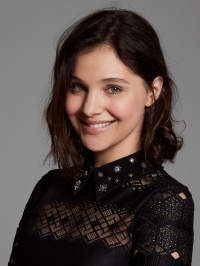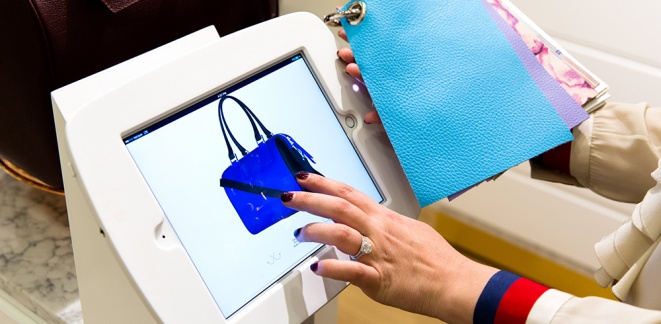
Is finding the perfect purse too much to ask?
That’s exactly the question Lana Hopkins asked herself a few years ago when her quest for a luxury handbag at one of Sydney’s largest shopping malls proved futile.

Lana Hopkins
On her way out of the mall, a Build-A-Bear store caught her eye. With her nephew’s first birthday coming up, Hopkins was delighted by the chance to be personally involved in creating the gift — everything from choosing the color of the fur and the eyes to stuffing the bear, placing the heart inside and choosing just the right outfit.
That experience sparked a new business idea: What if she could apply that same creative process to designing the perfect handbag?
“I couldn’t help but think, if I was that excited about designing a stuffed bear, imagine how I’d feel if I had a hand in creating the exact handbag I was looking for,” Hopkins says.
“Quality is paramount for me. When I pick up a European-made luxury handbag, I want the touch, the feel and the smell of the leather to convey quality. And I want to have a say in the color of the hardware, the type of leather and the pattern of the lining.”
Since the beta launch of Mon Purse in late 2014, the brand has grown 8,000 percent.
Immediate gratification
Two years later her idea is a full-fledged retail business. Since the beta launch of Mon Purse in late 2014, the brand has grown 8,000 percent and is on track to hit $20 million this year.
Originally launched online, the business now includes a flagship store in Sydney, along with in-store shops: five in Australian department stores, two in Selfridges in the United Kingdom and one in Bloomingdale’s New York flagship; another is set to open in Bloomingdale’s Union Square store in San Francisco.
Mon Purse’s leather goods business is built on a proprietary, customized user interface that enables customers to create and personalize their own leather handbag and leather goods using a 3D design tool.
Through physically based rendering technology that’s often used in gaming, customers can design a handbag, customize the leather, color, finishes, hardware, interior and monogram — and immediately see what the final product will look like through 3D rendering.
There are currently more than 6 billion design combinations and the number is growing.

The collection, manufactured in Turkey and Italy, features multiple colors and a range of leathers in varying textures, vegetable tan and prints. Shapes run the gamut from satchels to bowlers, totes to backpacks; small leather goods include wallets, passport holders, iPhone cases and cosmetic pouches.
Hopkins finds that shoppers tend to test the waters — and their design savvy — by purchasing smaller items such as a cosmetic pouch to start. Small leather goods start at $49, while larger bags crafted with multiple leathers and colors can be $500. Once shoppers experience the quality of European products and become more comfortable with the concept of design-your-own, they return to create a bowler bag for work and maybe a bucket bag for the weekend.
“We’ve got incredibly high lifetime value, and we’re seeing shoppers return again and again,” Hopkins says. “There is no one doing anything remotely like what we’re doing at the price points we offer.”
Furthermore, she insists that when a shopper is involved in the creation of a product, they will view it more favorably.
“It’s no longer about bling and big logos. It’s about individualization. People want to showcase their identity, their monogram.”
Lana Hopkins
Mon Purse
Capitalizing on consumer desire
Part of Mon Purse’s success could be attributed to timing — and a shift in shopper mindset.
“It’s no longer about bling and big logos. It’s about individualization,” Hopkins says. “We live in an Instagram world where it’s my meal, my walk — and yes, my handbag. Fashion is typically influenced by things outside our control. Sure, we choose from what’s provided, but ultimately it’s what someone else created. People want to showcase their identity, their monogram.
“Everyone is not the next Tom Ford, but that’s not what it’s about. It’s about curating beautiful product. Our designers come up with concepts and our customers make it their own by choosing the texture, the color and the lining,” says Hopkins, who favors a yellow-colored lining that makes it easier to spot her keys.
“Our handbags are an investment piece,” she says. “They become an extension of who the customer is.”
Hopkins is focused intensely on the consumer, believing that keeping them at the center of everything the company does is a key driver of Mon Purse’s success.
“If she prefers coming into the store to see and touch the product, maybe to choose something on the spot, have it monogrammed ... that’s great. Typically, that gives shoppers the confidence to design their own creation sometime later when they have the time to sit down at home, scroll through all the possibilities and watch their vision come to life by means of the 3D rendering.”
Hopkins is upbeat about 2017 and has set her sights on opening more doors in the United States — most by way of partnerships, though she’s not ruling out the possibility of a Mon Purse Gallery store somewhere in the country.
For now, she’s focused on building more fulfillment centers and developing processes to expedite product creation; she hopes to whittle production/fulfillment from about four weeks to one. Also on tap: plans for a U.S. headquarters.